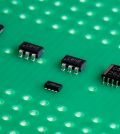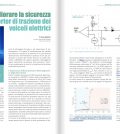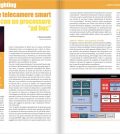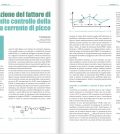Interfaces ICs – Answers provided by Heinz-Peter Beckemeyer, EMEA director analog marketing di Texas Instruments

EONEWS: What are your opinions regarding the major trends for this market (slowing, growing, booming…)?
BECKEMEYER: The analog interface market continues to grow. The growth is seen in markets such as smartphones, tablets, data networking, cloud computing, industrial and wireless infrastructure where there is a constant demand for higher bandwidth.
EONEWS: What are the key strategies adopted by your company in the short/medium period to address (or to better address) the needs of the market?
BECKEMEYER: Texas Instruments takes pride in key strategic areas to meet customers’ needs. We are heavily focused on the development of reference designs that customers’ use as a blueprint for implementing high data-rate applications. TI also takes a comprehensive approach to support the growing bandwidth requirement by developing process technologies and circuit design techniques that insure increased signal reach at a reduced system cost, while ensuring the lowest power consumption in the industry. Partnership with eco-system vendors (CPU, FPGA, microcontroller, peripheral controllers etc) to develop system-level solutions helps to reduce development time for our customers.
EONEWS: What are you doing in order to implement your strategies (partnership/agreements, new acquisitions, investments in activities like R&D, people….)?
BECKEMEYER: TI is focused on developing key intellectual property in the interface market to stay in front of the technology trends. One example of this is in the high-speed interface market for applications that implement 10GbE, 40GbE and 100GbE. As these standards come to full maturation in their respective markets, the need for low-power, highly-integrated and cost-effective solutions will greatly influence development strategies where process, architecture, and IP become very tightly coupled.
EONEWS: What are the most important application?
BECKEMEYER: TI has a broad portfolio of interface devices spanning many applications. The company is focused on the automotive and industrial markets, with key applications including automotive infotainment, driver assist systems, programmable logic controllers, sensor systems, CAN and RS-485. Texas Instruments’ FPD-Link III family of automotive video serializer and deserializer chipsets provides a comprehensive solution for video transport and distribution in the car. TI’s newest ISO71xx family are the industry’s first digital isolation devices to offer the highest isolation rating, at 2.5 kVrms.
In addition, the most important applications for communications interface inculde: optical modules (10GbE, 40GbE, 100GbE, SONET), LTE wireless infrastructure equipment, data center networking, and vectoring-based access networking.
EONEWS: Which are the key factors that set your company apart from the competition?
BECKEMEYER: TI is able to provide the entire signal chain solution for a given space including support and development tools while competition may only be able to provide point solutions or devices at the company level. Interface today is more than just providing an IC to a customer. It’s also about providing the tools, references, and support that enable a customer to achieve their interface implementation at the target performance, power, cost, and density points for winning in their market.
EONEWS: And in the middle/long term (if you have a crystal ball!)?
BECKEMEYER: The secular trend of higher data rates at lower power with greater density will drive interface IC development for the foreseeable future. As applications such as 100GbE, 4K television, and Advanced LTE become common place, interface IC vendors will need to invent novel approaches to solving high-speed data transmission challenges.
Edited by the Editorial Staff
Contenuti correlati
-
Progettazione di un circuito di precarica attiva con condensatore DC-Link ad alta tensione
Questo articolo presenta il processo di progettazione necessario per calcolare gli adeguati valori dei componenti che contribuiscono a ottenere il profilo di carica desiderato Leggi l’articolo completo su EO 521
-
I miglioramenti nella tecnologia RFID danno origine a nuove applicazioni
L’identificazione a radiofrequenza (RFID) è una tecnologia consolidata che viene impiegata da molti anni, con l’introduzione dei primi esempi di transponder RF passivi che risale agli anni 70. Probabilmente la usate tutti i giorni senza accorgervene, ma...
-
TI presenta i suoi nuovi PLD
Texas Instruments (TI) ha presentato nuovi dispositivi a logica programmabile (PLD) che permettono di semplificare e velocizzare lo sviluppo di progetti di dispositivi logici per qualsiasi tipo di applicazione. È possibile integrare fino a 40 combinazioni e...
-
Come migliorare la sicurezza negli inverter di trazione dei veicoli elettrici
I progettisti di veicoli elettrici possono aumentare la sicurezza e l’affidabilità dei sistemi a inverter di trazione monitorando la soglia di tensione del gate Leggi l’articolo completo su EO520
-
Finanziamenti per 1,6 miliardi per Texas Instruments
Texas Instruments (TI) ha firmato un memorandum d’intesa preliminare non vincolante con il Dipartimento del Commercio degli Stati Uniti per un finanziamento diretto fino a 1,6 miliardi di dollari. Questa operazione rientra nell’ambito del CHIPS and Science...
-
Un processore con LPDDR4 integrata accelera lo sviluppo di applicazioni
Il System-in-Package rappresenta una valida scelta di progettazione e può essere determinante per lo sviluppo di svariate applicazioni e dispositivi di tipo general purpose, nonché per soluzioni compatte e ad alte prestazioni Leggi l’articolo completo su EO519
-
Progettazione di un’applicazione per supportare ampi intervalli di tensione di ingresso e della batteria
Oltre a contribuire a ridurre i tempi di progetto, l’utilizzo di un caricabatterie ad ampio VIN e ampia VOUT permette di valutare nuove tecnologie, come la ricarica bidirezionale a energia solare Leggi l’articolo completo su EO519
-
Texas Instruments e Delta Electronics insieme per le soluzioni per EV
Texas Instruments (TI) ha stretto una collaborazione a lungo termine con Delta Electronics per creare soluzioni di ricarica di bordo e alimentazione di nuova generazione per veicoli elettrici (EV). Questa collaborazione sfrutterà le capacità di ricerca e...
-
Realizzare telecamere smart basate sull’AI con un processore “ad hoc”
Il processore AM62A è progettato per applicazioni di visione da bassa a media che richiedono una o due telecamere. Grazie al suo innovativo acceleratore per AI, all’encoder/decoder H264/H265 e al processore ISP (Image Sensor Processor) integrato dotato...
-
La correzione del fattore di potenza tramite controllo della modalità a corrente di picco
Questo nuovo metodo di controllo in modalità a corrente di picco per PFC presenta numerosi vantaggi rispetto al tradizionale metodo di controllo in modalità a corrente media che verranno illustrati in questo articolo Leggi l’articolo completo su...

















